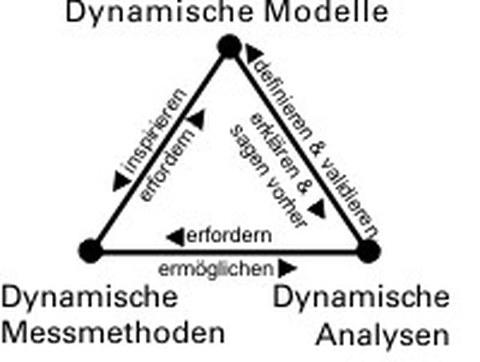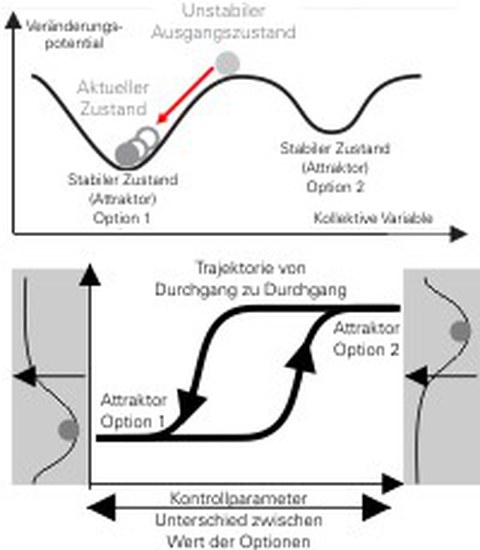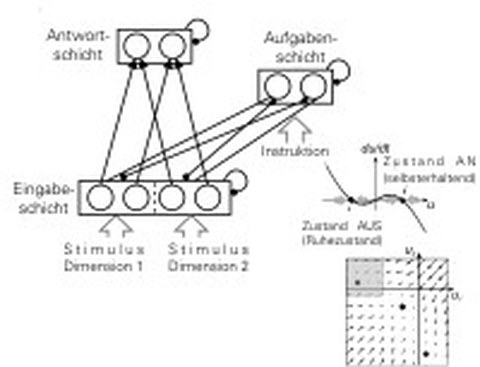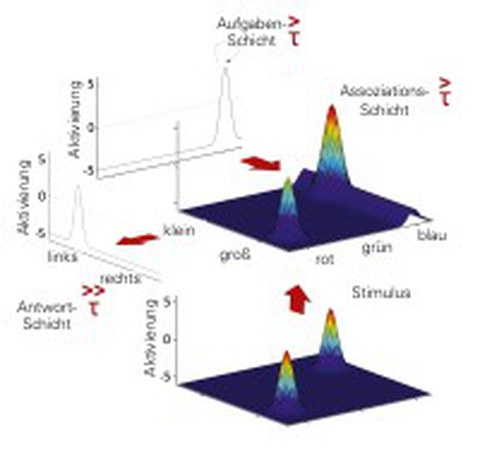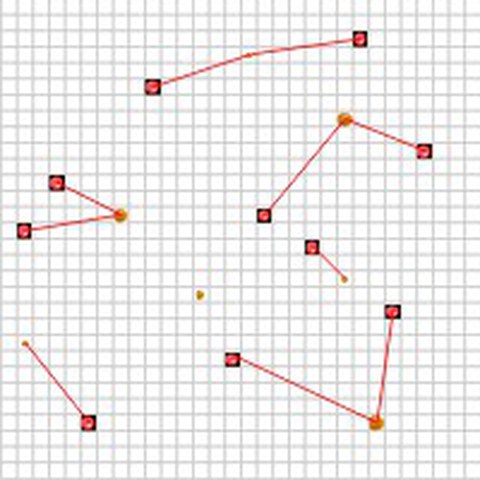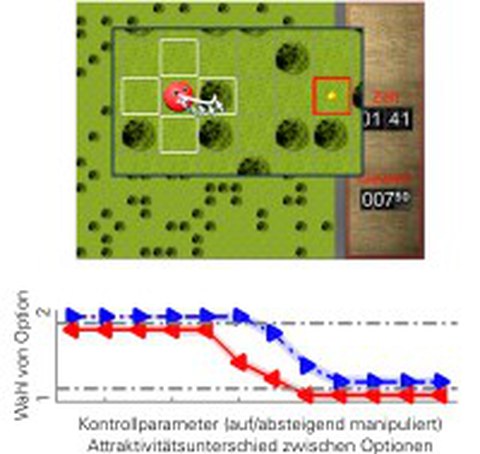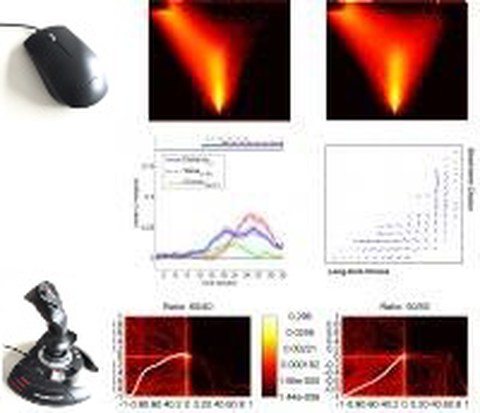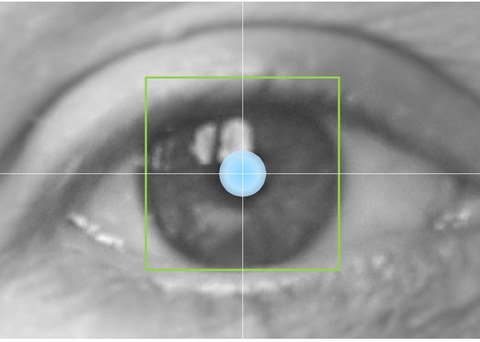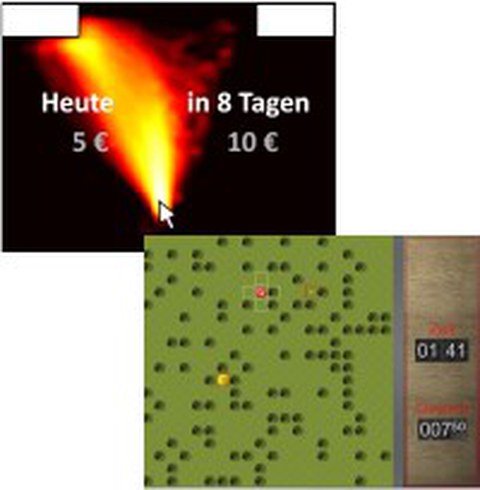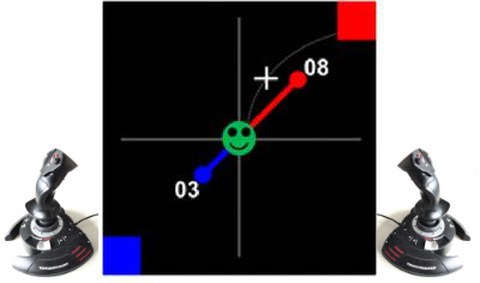Main research activities
RESEARCH APPROACH: COGNITION AS A FEATURE OF A COMPLEX DYNAMIC SYSTEM
How do we perceive our environment?
How do we control our actions?
How do we make decisions in ambivalent situations?
We find answers to these central psychological questions at various
- levels of complexity (neuronal, behavior, social interaction), and
- time scales (cognitive processes, ontogenetic processes, evolutionary processes).
How can we combine the different answers found at each level and time scale? The theory of complex dynamic systems (DST) offers such an integrative framework. It is based on the assumptions that cognition and behavior
- develop over time and are influenced by their history,
- emerge in interaction with the embedding context, and
- interact in a multicausal, non-linear manner.
Psychological research within the DST requires the development and complementarity of three research areas:
- the development of dynamic models of the temporally and spatially continuous course of cognitive processes;
- the development and application of investigative methods to capture behavior and cognitive processes over time;
- the development and application of analytical methods for the multidimensional and temporally varying influences on behavior and cognition.
The aim of this approach is to develop models as formalized theories from the neural to the social level, to model cognition and behavior as they arise in the real world: continuously and contextually embedded.
Models as formalized theories allow for
- the internal validation of theories by the means of a forced check for consistency as an effect of formalization and, thus, also the proof of concept of a theory;
- external validation by comparing simulation results (predictions) and empirical results;
- the combination of different research approaches (behavioral science, physiological and imaging research) through model-based analyses;
- more precise theories on the background of psychological disorders and possible treatment approaches (keyword: computational psychiatry).
DEVELOPMENT OF DYNAMIC COGNITIVE MODELS
Attractor models, diffusion models, & differential equations
In attractor models, we map the dynamics of cognitive processes on a high level of abstraction and link them to more basic levels of explanation.
Attractor dynamics in competitive neural networks
With biologically inspired neural networks, we investigate the competitive interactional dynamics of various cognitive states, for instance, to predict EEG data on cognitive control processes.
Dynamic neural fields
With dynamic neural field models, we map the spatially and temporally continuous development of cognitive states, in order to predict, for instance, selection movements in decision-making tasks.
Agent-based models
With agent-based models, we examine which basic rules of interaction between individuals allow the emergence of complex behavior patterns at the level of groups.
DEVELOPMENT OF MEASUREMENT AND ANALYSIS METHODS OF COGNITIVE PROCESS DYNAMICS
Dynamic behavioral tasks: continuity within and across trial
Our tasks enable us to study the interaction dynamics and stability of cognitive states within and across trial, for instance, decision-making and adherence to once selected options.
Frequency tagged EEG & EEG time frequency analysis
Modern EEG methods allow the tracking of the development of cognitive processes at the level of milliseconds, e.g. the modulation of attention in reaction to stimuli which are marked with a flicker frequency.
Continuous motion tracking with computer mouse and joystick
By analyzing motor movements during decisions, we determine the power and timing of influencing factors on cognitive processes. For example, a more attractive distracting option will cause a greater excursion of mouse cursor movements.
Eye movements as an indicator of cognitive processes
By analyzing eye-tracking data we determine the time points at which attention, and hence, cognitive processing is directed at certain stimuli.
EXEMPLARY AREAS OF APPLICATION
Decisions
We turn classic decision-making tasks into dynamic tasks. In doing so, we examine the processes that ultimately lead to a decision, for instance, why people tend to choose a small but immediate over a bigger but later reward.
Cognitive control & volition
We turn classical cognitive control tasks (e.g., Flanker task or Simon task) into dynamic tasks.In doing so, we investigate the time course of cognitive control processes, such as, the focus of attention with impending distraction.
Social interaction & decisions
With dynamic collaborative decision-making tasks, we examine the dynamic agreement processes in couples and groups, for instance, by analyzing concurrent selection motions of couples who must collectively decide on a reward.

